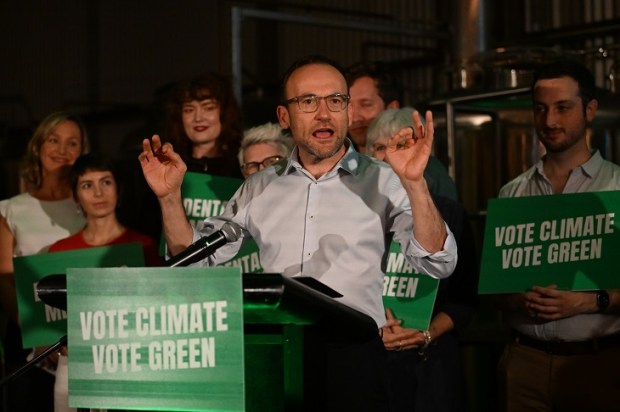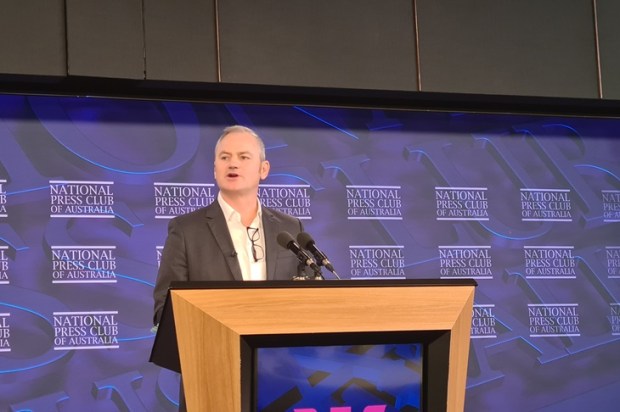Peter Dutton’s announcement that the Coalition will build seven nuclear reactors on the sites of existing coal-fired power stations is good policy and it will work. In response, the Albanese government has nothing but lame memes and a $1.3 trillion renewables policy that shows no signs of providing reliable, affordable electricity for industry or consumers.
Indeed, under Albo’s watch, Australia is in the worst shape it’s ever been, considering the cost-of-living crisis is an own-goal by Albo and Minister for Climate Change and Energy Chris Bowen. Even the much-maligned RMIT ABC Fact Check is now saying that Bowen’s claims about nuclear plants are ‘exaggerated’.
Labor is scared because it knows its ideologically driven energy policy is a grifter’s paradise that has nothing to do with providing cheap and reliable energy.
But much of this has been said already and it is not the point of my argument.
Here I outline the merits of a government-owned and built fleet of nuclear reactors for Australia.
I have been highly critical of government control of industry in the past, especially when it comes to networked infrastructure such as telecommunications, roads, and energy assets. Key to my argument is that the purpose of government is to protect the public interest, not to provide goods and services that are innovative and meet the needs of consumers.
Businesses operating in the market are incentivised by potential profits. Businesses compete in the marketplace with each other and take risks to secure rewards for their shareholders.
Governments, on the other hand, are necessarily risk-averse and, in attempting to function as ‘model employers’, can often create perverse incentives that minimise risk while also rewarding compliance rather than achieving outcomes.
Sound relationships between governments and businesses are fundamental to a healthy, functional, and free society. But experience proves that neither is very good at performing the other’s role. Labor governments typically develop what I call targeted or anticipatory industry policy where the government attempts to ‘stimulate or assist’ industries to achieve desired outcomes.
This often results in governments attempting to ‘pick winners’, like ‘renewables’.
And while it would make life easier if I could tell you that Coalition governments typically focus on ‘passive’ industry policy, where governments focus on ‘establishing conditions that support competition within all industries’, political conditions often dictate the extent the Coalition’s policy preferences can be actualised.
During the Hawke-Keating and later the Howard eras, the long prime ministerial tenures enabled consistent attempts at reform over time.
However, when governments or their leaders change in rapid succession, as we have seen in recent times, each new government must deal with the legacies of the previous government’s policies. NBN and the NDIS are cases in point where dismantling the institutions established by previous governments is nigh impossible.
Governments therefore need to be pragmatic rather than follow a particular ideological agenda. Assuming of course the relevant political party is capable of doing so, which the Albanese government is not when it comes to nuclear energy.
Given the Albanese government has established an anticipatory industry policy in the energy sector, it would be impossible for a nuclear industry to compete with the heavily subsidised renewables energy sector.
And when it comes to energy policy, Labor’s factions forget their market credentials and come together as one in their opposition to nuclear.
Much of the criticism of Mr Dutton’s nuclear energy policy is that it will destroy ‘business certainty’. But any business that relies on elected governments to fund their operations is either operating in a false market or is cosying up to the government to access funds (or as Judith Sloan wrote recently, rent-seeking or grifting) it might otherwise not have received.
Labor’s Home Insulation Program, which brought about the end of Peter Garrett’s political career, is a recent example of the perverse outcomes that can result from the false market conditions created by government. Our energy industry is in this same false space now and it is failing Australians.
So why is a government-built and owned nuclear reactor fleet a good idea? There are five main reasons.
First, the Australian Nuclear Science and Technology Organisation (ANSTO) already has experience in managing the ‘overall design and construction process’ of the OPAL reactor at Lucas Heights.
Second, the current false market conditions need to be rebalanced. Contracts that have been signed already are unlikely to be terminated for free. But elected governments can change policy and government control of the build and operation of a nuclear reactor fleet will help mitigate the risk at least in the early stages of the transition to nuclear energy.
Third, there is an enormous likelihood that the government can capitalise on goodwill with unions in the energy sector by creating new employment opportunities for energy industry workers who will otherwise lose their jobs under Labor.
Labor governments such as the federal government and the ACT government have effectively sidelined unions in the energy and transport sectors by privatising or subsidising new infrastructure modes. In a country that is now deeply divided, the irony of bringing the unions on board should not be lost on Mr Dutton.
While I am sure many readers will disagree, the case for compromise politics with the energy sector unions is strong. And if we don’t get a nuclear reactor fleet soon our future will be hell.
Fourth, key positions in the civilian nuclear industry will be crucial to supporting the Aukus submarine program. These key players need to have appropriate security clearances and government oversight as a national security priority. Australia’s nuclear history during the Menzies era and the earlier establishment of ASIO suggest the Americans will require government oversight of anything to do with nuclear.
And fifth, Australia has a nuclear cooperation treaty with Canada (and other governments) that enables the transfer of proven nuclear technologies. Canada, for example, is willing to share its technology with us now. This will require government control.
But probably the biggest hurdle is the public service. The skills needed to manage the build of nuclear reactors cannot be left to those whose experience is in avoiding risk. Australia routinely suffers from blowouts in time and budget for major infrastructure projects where the public service is involved. This is not a criticism but a fact concerning the role of the public service.
We do have the ability to manage major infrastructure projects, but we can’t leave these to the old guard. The public service will have to get over itself and we may have to hire the best and brightest and pay them what they are worth.
This will be a major sticking point as it has often been with major defence projects where the value of project managers and contract negotiators has been minimised only to result in blowouts in timeframes and budgets that significantly outweigh the cost of hiring the best people.
Government ownership and control of a nuclear reactor fleet may not be a natural economic fit for the Coalition, but there seems to be little point in letting ideology drive our energy policy in the current cost of living crisis.
Ideology got us here in the first place.
And finally, a government-owned and controlled nuclear industry will only control the generators and the distribution assets. Under the current energy policy, the plan is to take control of your energy assets to back up the unreliable wind, solar, and battery assets being touted by Labor.
If the next election goes to plan, we can look forward to the Coalition providing affordable and reliable light at the end of the tunnel.

























